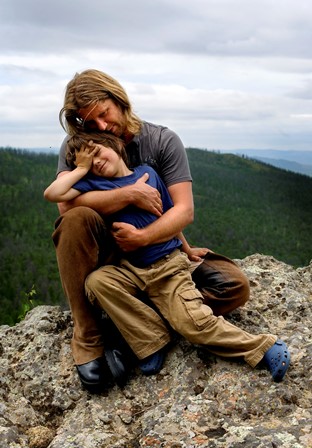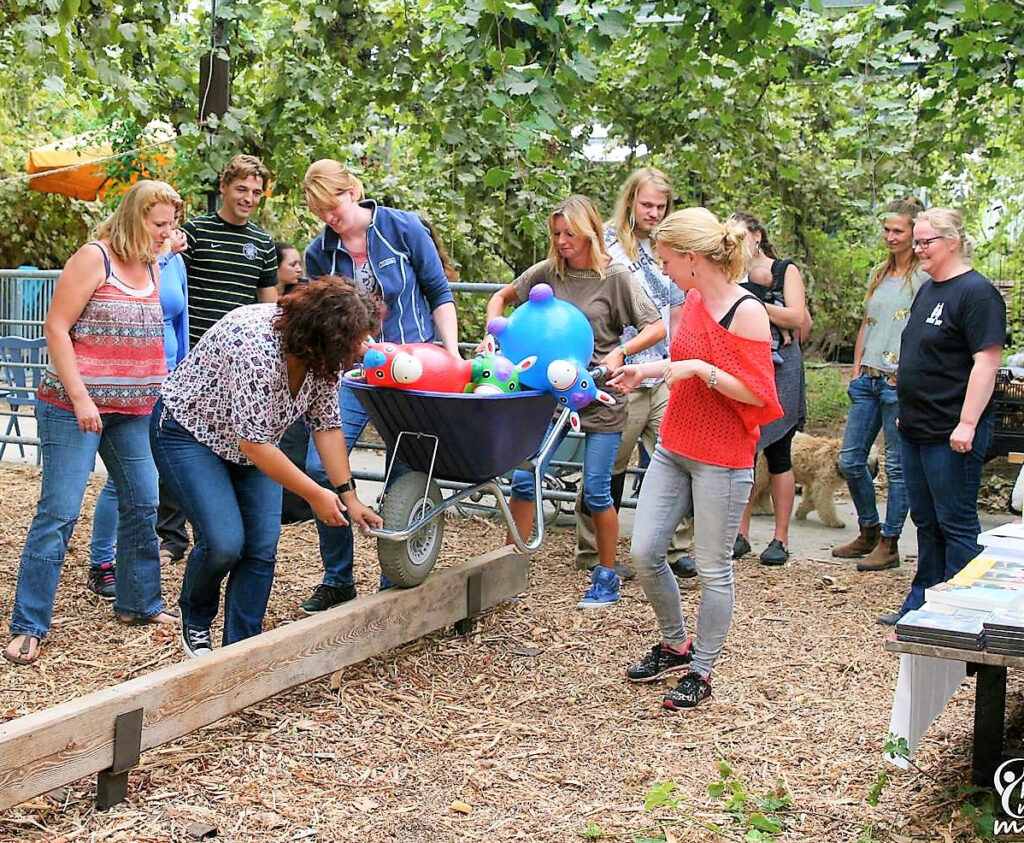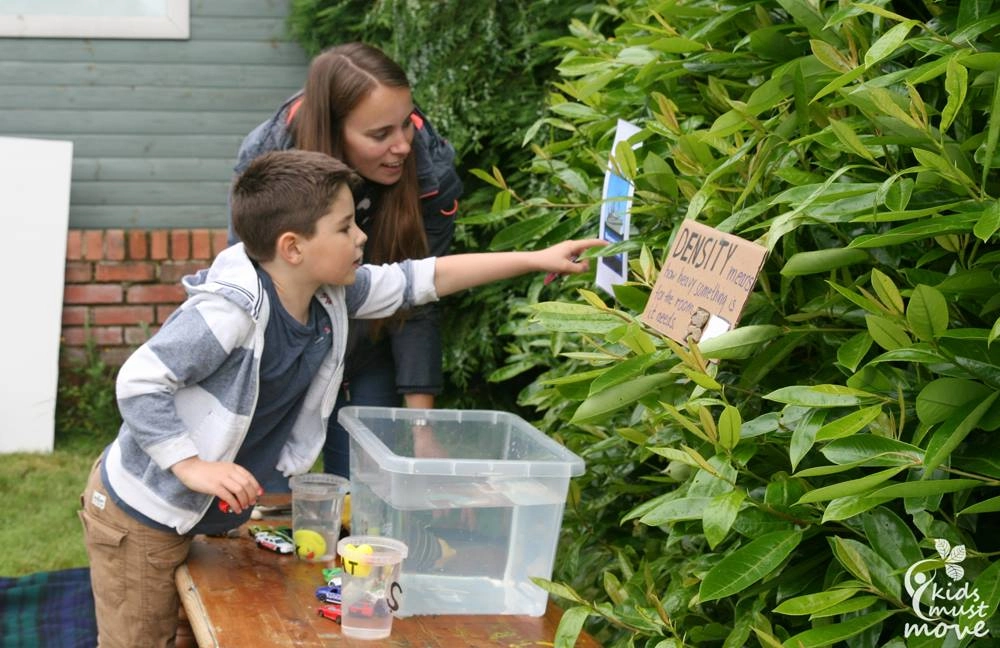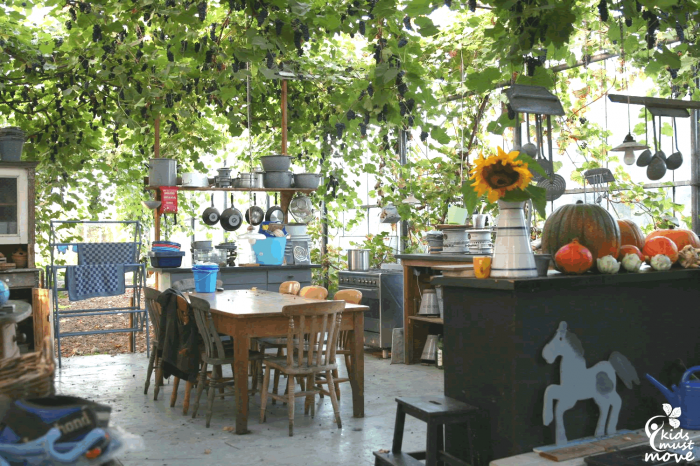Welcome to New Trails Learning Systems: Horse Boy Method, Movement Method, Compassionate Behavioral Approach, and Kids Must Move.
Horse Boy – now New Trails Learning Systems – is the brainchild of Rupert Isaacson, and grew out of his experience with his son Rowan’s autism.
In April 2004 Rupert’s son Rowan was diagnosed with autism. At first Rowan seemed unreachable.
The language of the autism professionals that Rupert consulted with was all negative: dysfunction, deficit, disorder. As a journalist, Rupert asked – what was the other side of the story? What were the gifts of Autism? Were there advantages of having an autistic brain? None of the professionals (therapists and neurologists) seemed able to tell him. So Rupert made up his mind to find an adult autist who had started as severe as Rowan and who had become successful in life. He found Dr. Temple Grandin, who at 3 had been non verbal, and who is now a multiple bestselling author and professor of animal sciences at Colorado State University. He asked her for an interview and asked her: ” How does my son become you?”
Dr. Grandin told Rupert to do 3 things:
- Follow the child (physically, emotionally, and intellectually);
- Work outside in nature as much as possible, where there are no bad sensory triggers;
- Let Rowan move, move, move – because most kids on the spectrum are kinetic learners.
Rupert followed Dr. Grandin’s advice and found immediate success – eventually honing the two approaches now known as Horse Boy Method and Movement Method.
The really important thing to note here is that from the get go, Rupert and Horse Boy sought out – and continue to seek out – direct mentorship from people on the autism spectrum. Very few therapeutic approaches do this, even though adult autists are often articulate, intelligent, and well able to offer guidance. To Rupert it seemed purely practical to seek out their mentorship, because the only person who could truly understand autism is an autist.
All of the subsequent success of Horse Boy’s approaches, and the reason that autists themselves endorse the Horse Boy’s approaches and The Horse Boy Foundation, can be traced to this super rational decision to seek direct mentorship from autists themselves.
When Rupert returned from his interview with Dr. Grandin, he found that his son’s behavioral therapists were doing the opposite of what Dr. Grandin had prescribed. They were confining Rowan to rooms, trying to force him to sit at tables and desks – were ignoring all Rowan’s attempts to communicate that he wanted to be outside and move – and in general were behaving in such an un-empathetic way that Rowan was distressed for most of the session.
When Rupert told the therapists what Dr. Grandin had advised – to take an opposite approach – the therapists became quite hostile and aggressive. Again being a journalist, Rupert was trained to ask questions. The relevant question here was: “Why were these therapists suddenly so aggressive?” Humans only get aggressive when they are afraid of something, so what could these therapists logically be afraid of?
The only thing Rupert could logically think of, was that perhaps these therapists themselves suspected that their approaches were neither effective nor kind. Certainly they were very expensive. So Rupert fired them, took Dr. Grandin’s advice and followed his son out into the woods behind his house, which is where Rowan always wanted to spend his time.

One day while out in the woods as Dr. Grandin had advised, Rowan spotted his neighbor’s horse herd and ran in amongst them. Rupert’s heart froze.
Rupert, a lifelong horseman and ex – professional horse trainer, had been keeping his son away from horses – thinking him unsafe around them.
However, that day he witnessed something extraordinary.
Instead of trampling this squirming, babbling little child lying on his back among their hooves, the horses backed off gently.
Then the boss of the herd, a mare called Betsy, came over and began to lower her head in front of Rowan, to lick and chew with her lips. This is the sign of equine submission.
Rupert had never seen a horse voluntarily make this submission gesture to a human being before. Clearly something was passing between the horse and his little boy.
So Rupert talked to his neighbor Stafford, who owned Betsy, and got the key to his saddle room. For the following three years father and son rode every day through the woods and fields of Central Texas and – first while riding Betsy, then in normal life situations, Rowan began to talk, and to engage with his environment and other people.
Rupert realized that autism was not a problem to fix but a gateway to adventure. He realized that his son had an extraordinary brain and that in fact many people on the spectrum had great intellectual gifts, but that many therapists and parents were so busy training to teach ‘normal’ behaviors to their autistic children that they completely missed these gifts and often stifled their autistic child’s intellect and sense of wonder. It was in this spirit of adventure and exploration, that in 2007 Rowan, and his dad took a journey across Mongolia on horseback, going from traditional healer to traditional healer, shaman to shaman, looking for healing.
They went out with a child who at almost 6 years old was still tantrumming, still un-toilet trained, and cut off from other children. They came back with a child no longer tantrumming, who was now toilet trained, and who was now able to make friends.
Rupert wrote a book about his family’s adventure, and also produced a film which documented the trip. Both are titled “The Horse Boy”.
After returning from Mongolia, the Isaacson family started a non-profit, The Horse Boy Foundation, to help make horses, nature and kinetic learning available to other children, autistic or not, who might not otherwise have access to them. From serving children locally through the Foundation, Rupert and his team evolved through Horse Boy’s training company two internationally acclaimed approaches for building social and academic skills for the autistic brain – and also for people with conditions such as ADD, ADHD, depression, anxiety, PTSD, chronic stress and more. From that first day standing in a field with his son and a single horse Rupert and his team have built the company and Foundation to the point where now more than 25,000 families in 20 countries are served on a weekly basis. We also subsidize families to go to camps and participate in other Horse Boy Programs.

Both Horse Boy Method and Movement Method – the two main approaches evolved because very quickly Rupert and his growing team noticed that the communication and learning that they had achieved with Rowan soon went way beyond speech to literacy and numeracy, both on the horse and on play-equipment, and that it was possible to reproduce these effects with other children as well.
What Rupert and his team realized was that as long as the environment had no bad sensory triggers, the humans involved were ultra empathetic and could follow the child’s interests and obsessions, they could skillfully feed information themed to these interests into the child’s brain as he or she moved, and that this learning was long term not short term.
Today Horse Boy Method and Movement Method are regarded by many neuro-scientists and educational scientists as representing the cutting edge in both brain development and education.

What attracted neuro-scientists to Horse Boy’s approaches was a consensus that when the brain is stressed beyond a certain point, learning is made impossible because in these situations the brain causes us to produce the ‘cell danger hormone’ cortisol – which is an actual neuro-toxin designed to kill the brain cells that connect the reptilian brain (the part of our brain concerned with survival), with the frontal lobe (the part of our brain concerned with executive function)..
In layman’s terms what that means is that an over stressed brain simply cannot access its logic, reason, and emotional control centers. Certainly it cannot learn. But by removing the stresses that contribute to this ‘cell danger response’ and introducing movements – both on the horse and on play equipment -designed to rock the pelvis in rhythm, Rupert and his team were replacing the stress hormone cortisol with the happiness and communication hormone oxytocin, and therefore were reversing this ‘cell danger response’ – which so many children with autism, ADD, ADHD and other related conditions suffer so acutely from.
In addition, these movements were lighting up the cerebellum, the vestibular system, the pre-frontal cortex, and were making the brain produce a protein called BDNF (Brain Derived Neurotrophic Factor) that acts as a kind of ‘Miracle Gro’ for the IQ. The scientists who support our approaches include Dr. Robert Naviaux director of the Mitochondrial Institute University of California San Diego, Dr. Alysson Muotri also of UCSD, Dr. Alfred Ziegler University of Osnabrueck Germany, Dr. Temple Grandin Colorado State University Fort Collins, and many others.
Since 2013, studies have been conducted into both our therapeutic and academic approaches through the University of Texas Austin, Belmont University Nashville, University of Gothenburg Sweden, University of Osnabrueck Germany, University of Groeningen Netherlands, and more are ongoing.
Horse Boy also works with interns from these universities, as well as the University of Leiden Netherlands, University of Bologna Italy, University of Nottingham Trent and others.

In the past few years Horse Boy has honed not just its therapeutic approaches but is also adapting the middle school math and science curriculum for 13 to 16 year old kids as a series of kinetic lesson plans to be used both in home-school and regular classroom environments. These are in addition to the already well over 100 lesson modules for autism, ADD and other related conditions that Horse Boy already offers – from the most basic communication to pre-college level math. Many thousands of families benefit from these plans and modules every week.
We are always looking to develop our curricular further and collaborate with over 10 universities world wide constantly to add to our growing academic portfolio.
We are helping to change how learning is delivered, not just for autism but for neuro-typical children. We are ending the notion that children need to suffer in order to learn. What started with a father and his son and a horse in a field in Central Texas, has become a paradigm shift in education an therapy, building compassionate, effective modules that really work, that heal families, and that recognize and bring out the enormous potential of the many different types on human brain. Please join us as our story continues.

While this page is run by our for-profit organization, you can support our work non-profit work through The Horse Boy Foundation, it is a 501(c)3 registered non-profit in the USA The Horse Boy Foundation’s EIN number is 45-4497358.